Co-Editors-in-Chief
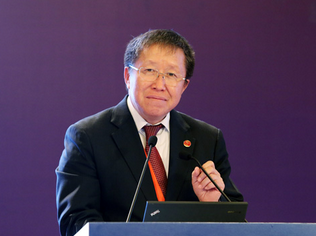
Jianlin Cao
The People's Republic of China Ministry of Science and Technology, China
Jianlin Cao is Professor in Optics and former Vice Minister of the Ministry of Science and Technology of China. He graduated from the Department of Physics at Fudan University in 1982, and obtained his Ph.D. degree from the joint-training program at the Changchun Institute of Optics and Fine Mechanics (CIOFM), Chinese Academy of Sciences (CAS), and Tohoku University in Japan in 1989. From 1989 to 1992, he undertook postdoctoral research at CIOFM, later working as a research professor, supervisor of Ph.D. students, Executive Deputy Director (legal representative) and Director of CIOFM, as well as Director of the Changchun Institute of Optics, Fine Mechanics and Physics. He served as an assistant to the President of CAS, head of the preparatory CAS Opto-Electronics Group, and President of the CAS Academy of Opto-Electronics. In January 2005, he was nominated for Vice President of CAS, President of the CAS Academy of Opto-Electonics, and Director of the State Key Laboratory of Applied Optics. In September 2006, he was appointed as Vice Minister of the Ministry of Science and Technology of China. He is also Editor-in-Chief of the journals Light: Science & Applications and holds editorial positions with several other academic journals.
Cao has been working in the area of soft x-ray multilayer technology research and has received recognition both domestically in China and internationally for his outstanding achievements. He received first grade awards for young scientists from CAS in 1995 and the National Science Fund for Distinguished Young Scholars of China in 1997.
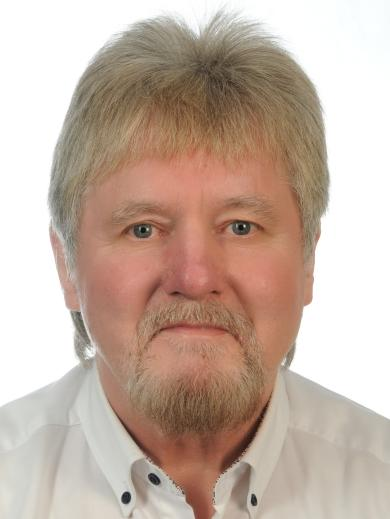
Wolfgang Osten
Institute of Applied Optics, University of Stuttgart, Germany
Wolfgang Osten received the MSc/Diploma in Physics from the Friedrich-Schiller-University Jena in 1979. From 1979 to 1991 he was working at the Academy of Sciences in Berlin in several institutes making investigations in coherent metrology, digital image processing and machine vision. In 1983 he received the PhD degree from the Martin-Luther-University Halle-Wittenberg for his thesis in the field of holographic interferometry. In 1991 he joined the Bremen Institute for Applied Beam Technology (BIAS) to establish and to direct the department Optical 3D-Metrology till 2002. From September 2002 till October 2018 he has been a full professor at the University of Stuttgart and director of the Institute for Applied Optics. From 2006 till 2010 he was the vice rector for research and technology transfer of the Stuttgart University. His research work is focused on new concepts for industrial inspection and metrology by combining modern principles of optical metrology, sensor technology and digital image processing. Special attention is directed to the development of resolution enhanced technologies for the investigation of micro and nano structures. Wolfgang Osten is fellow of OSA, SPIE, EOS, and SEM, and senior member of IEEE. He is a Honorary Professor of the Shenzhen University, China, a Honorary Doctor of the University of Technology of Ilmenau, Germany, the 2011 recipient of the Dennis Gabor Award of the The International Society for Optics and Photonics SPIE, the 2018 recipient of the Rudolf Kingslake Medal of the SPIE, the 2019 recipient of the Chandra Vikram Award of the SPIE, and the 2019 recipient of the Emmeth Leith Medal of the International Society OPTICA.
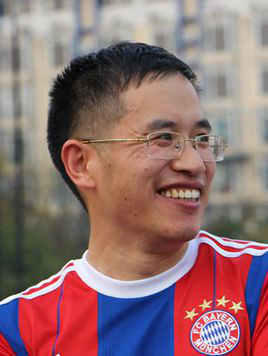
Lianshan Yan
Southwest Jiaotong University, Chengdu, China
Lianshan Yan received B.E. and Ph.D. degree from Zhejiang University and the University of Southern California (USC), respectively. He has worked on solid state laser in North China Research Institute of Optoelectronics (1994-1999) and has been with General Photonics Corp. as the chief scientist and manager of Engineering (2005-2007). He is currently the director of Center for Information Photonics & Communications (CIPC) at Southwest Jiaotong University, China.
Prof. Yan is the author and co-author of more than 500 papers, including more than ten invited journal papers and more than forty invited talks. He also authored three books and two book chapters. He holds thirteen issued U.S. patents and more than forty Chinese patents.
Prof. Yan is a Fellow of Optical Society of America (OSA). He received the IEEE Photonics Society Distinguished Lecturer Award (2011-2013) and IEEE LEOS Graduate Fellowship (2002). He is the co-chair or TPC member of more than forty international conferences. He is also the winner of the National Science Fund for Distinguished Young Scholars of China, Chair Professor of Cheung Kong Scholars Programme. He was the Chair of Optical Fiber Technology Technical Group of Optical Society of America (OSA, 2015-2018) and an associate editor of IEEE Photonics Journal (2009-2015).
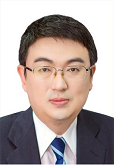
Liang Gao
Huazhong University of Science and Technology, China
Liang Gao received his B.Sc. degree in mechatronic engineering from Xidian University, Xi’ an, China, in 1996, and the Ph.D. degree in mechatronic engineering from Huazhong University of Science and Technology (HUST), Wuhan, China, in 2002. He is a Professor of the Department of Industrial and Manufacturing Systems Engineering (IMSE), School of Mechanical Science and Engineering, HUST. Now he is Vice President of HUST and the Director of National Center of Technology Innovation for Intelligent Design and Numerical Control. He was supported by the National Science Fund for Distinguished Young Scholars of China in 2018. His research interests include intelligent optimization algorithms, big data, deep learning with applications in Design & Manufacturing. He published more than 540 papers indexed by SCIE, authored 15 monographs. His citation is 16000 times and H is 63 according to the Web of Science. From 2020 to 2022, he is a Highly Cited Researcher by Clarivate Web of Science and Highly Cited Chinese Researchers by Elsevier.
Editors
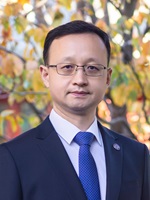
Benfeng Bai
Department of Precision Instrument, Tsinghua University, China
Benfeng Bai is the principal investigator of the Nanophotonics Group at the Department of Precision Instrument, Tsinghua University, China, with research emphases on advanced nano-devices, nano-fabrication and nano-measurement based on near-field optics. He has published 100+ research papers in leading SCI-indexed journals including Nature series, Light: Sci. Appl., ACS Nano, Nano Letters, Adv. Fun. Mater., etc. with 8000+ citations, has given 30+ keynote and invited talks in international conferences, and has been granted 30+ patents. As the responsible leader, he has led 10+ research projects funded by the Ministry of Science and Technology of China, the National Natural Science Foundation of China, etc. He provides services in many national and international academic organizations such as the board member of the National Technical Committee on Standardization of Nanotechnology of China (SAC/TC279) and the coordinator of the Sino-French Optoelectronics and Photonics International Research Network (PHOTONET). He has served as editors or board members for journals including Optics Letters, Micromachines, and Applied Physics B. He is currently the senior member of the Institute of Electrical and Electronics Engineers (IEEE), the Chinese Optical Society (COS), and the Chinese Society for Optical Engineering (CSOE).
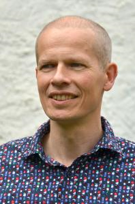
Andreas Beutler
Mahr GmbH, Göttingen, Germany
Andreas Beutler studied physics at the Universities of Bremen and Hamburg, Germany. He wrote his doctoral thesis on surface physics at Lunds University / MAXlab, Sweden. Since 1999 he develops measuring instruments and researches at Mahr GmbH, Göttingen, Germany. He is responsible for advanced technology developments and research projects. His emphasis is on profilometry, optical sensors and metrology for optics production.
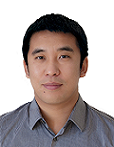
Hai Bi
Ji Hua Laboratory, China
Hai Bi received his BE and ME degrees in Chemistry from Jilin University in 2007 and 2010, respectively. He received his doctoral degree in Physics from Technique University of Munich in 2014. He was working in Harvard University SEAS from 2015 to 2019. He moved to Ji Hua Laboratory as a principle investigator from 2020 and founded the Germany-China Joint Innovation Laboratory. His research interests include the super-resolution microscopy with near-field enhanced mechanism, optoelectronic devices of organic semiconductors and organic semiconductor. He is spending much effort to apply his proposed methods and technologies to the practical industrial field, especially for the technique and equipment of OLEDs.
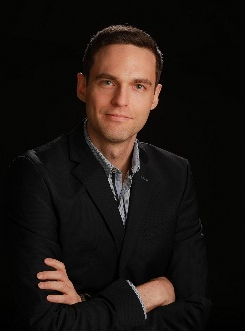
David Blinder
Vrije Universiteit Brussel, The Kingdom of Belgium
David Blinder is a professor at the Vrije Universiteit Brussel (ETRO) and a Senior fellow with the Fund for Scientific Research Flanders (FWO), and is also affiliated with imec, a leading nanoelectronics and digital technologies research institute. He is the PI of a lab, where he has over ten years of experience in research and teaching optics, signal processing, and computer science.
His research focuses on signal processing in photonics and holography, covering topics such as numerical diffraction, time-frequency analysis, data compression, computational imaging, image and video processing, holographic displays, computer graphics, inverse methods, and high-performance computing. He is the lead editor of the JPEG Pleno Holography standard, the first worldwide standard for the compression of holographic content (JPEG Pleno Part 5 Holography, ISO/IEC 21794-5). He (co-)authored over 100 international peer-reviewed scientific publications and patent applications and has received multiple awards and honors for his work.
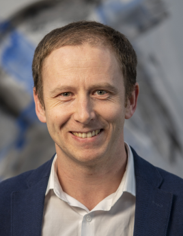
Daniel Claus
Institut für Lasertechnologien in der Medizin und Meßtechnik, Ulm, Germany
Daniel Claus studied Precision Engineering at the University of Ilmenau. In 2010, he received his Ph.D. from the University of Warwick, UK. He worked as a postdoc at the University of Sheffield (Ultramicroscopy project) and at the University of Stuttgart (ITO). Since 2017, he is head of the optical metrology group at the Institut für Lasertechnologien in der Medizin und Meßtechnik, Ulm. His main research interests are quantitative phase imaging and chromatic confocal imaging.
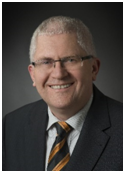
Juergen Czarske
TU Dresden, Germany
Juergen Czarske is Full Professor, Director and Senator at TU Dresden, Dresden, Germany. He received the Diploma, the Ph.D. and habilitation (venia legendi) degrees from Leibniz University of Hannover, Germany. From 1986 to 1991 he was funded by a scholarship from the company Siemens AG and worked in the Corporate Technology of Siemens AG in Munich. From 1991 to 1996 he was based at the Leibniz University. From 1995 to 2004 he was with the Laser Center Hannover (LZH e.V.). As a visiting scholar he conducted research at companies and institutes in Japan and the USA from 1996 to 2001.Since 2004 he is based at the Faculty of Electrical and Computer Engineering, TU Dresden. His awards include the1996 AHMT Measurement Technology Award, a 2008 Berthold Leibinger Innovation Award, a 2014 Reinhart Koselleck project of the German Research Foundation and the 2019 Joseph Fraunhofer Prize and the Robert M. Burley Prize of the Optical Society (OSA) for achievements in optical engineering. He is Life Fellow of OSA and SPIE, Fellow of EOS and senior member of IEEE. He was recognized as SPIE Community Champion for outstanding volunteerism. Juergen Czarske is associate editor of Photonics, the Journal of the European Optical Society - Rapid Publications, advisor of the Student Chapter Dresden of SPIE, board member of the German Association for Applied Optics (DGaO) and the German Society for Laser Anemometry (GALA), elected member of the Saxon Academy of Sciences in Leipzig, and of the Scientific Society for Laser Technology (WLT). Juergen Czarske has published around 200 articles in peer-reviewed SCI-journals, held over 100 invited lectures and holds more than 20 patents. His research aims on the universal control and application of coherent waves using adaptive digital systems. He is known for computational laser metrology, unconventional optical imaging with wavefront shaping and adaptive optics, lensless fiber endoscopy for cell rotation, Brillouin microscopy using fs-laser, real-time digital optical phase conjugation, advanced biomedical imaging and stimulation with optogenetics, and non-intrusive precision measurements with interferometry and holography at harsh environments and inline monitoring of production processes.
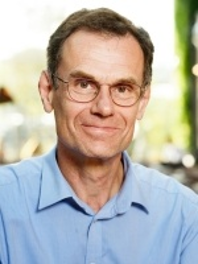
Arie Den Boef
Advanced Semiconductor Material Lithography (ASML), Veldhoven, The Netherlands
Arie den Boef worked at Philips Research Laboratories from 1979 till 1992 in the area of laser diodes for compact disc applications and optical interferometry for industrial metrology applications. In 1991 he received a Ph.D. degree from the University of Twente with a thesis titled “Scanning Force Microscopy using Optical Interferometry”. From 1992 till 1995 den Boef worked at Philips Medical Systems on Magnetic Resonance Imaging and in 1995 he worked as system engineer on CD-Recordable systems. In 1997 he joined ASML where he started exploring various optical sensors with emphasis on wafer alignment sensors and scatterometry for CD and overlay metrology. Den Boef was appointed part-time full professor in 2016 at the Vrije Universiteit of Amsterdam in the area of “nano-lithography and metrology”. At the university he is teaching a course on optical wafer metrology techniques and he has set-up a small research group that explores new optical techniques for metrology applications in the semiconductor industry.
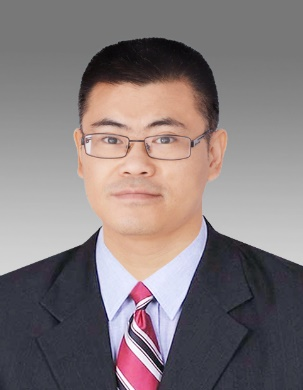
Baofu Ding
Shenzhen Institute of Advanced Technology (SIAT), Chinese Academy of Sciences, Shenzhen, China
Baofu Ding holds BSc degree from Northeast Normal University and Ph.D. degree of condensed matter physics from Fudan University. He worked as a postdoc from University of Hong Kong, and Research Associate from Edith Cowan University, Australia. He then worked as a senior research scientist from Tsinghua University Since 2021, he moved to Shenzhen Institute of Advanced Technology, Chinese Academy of Sciences, and joined the Institute of Technology for Carbon Neutrality and Faculty of Materials Science and Engineering as an Associate Professor.
His research interests include inorganic and organic semiconducting materials and related optical device physics. Particularly, his current focus is on the development of new type liquid crystals with unique physical and optical properties as well as the novel applications, such as giant electro/magneto-optical effects and electro/magneto-chromic effects, DUV modulation, novel membrane separation. He has published over 100 papers in high-impact journals, among which, he published first- or corresponding- author papers in Nat. Nanotechnol., Nat. Commun., Sci. Adv., Light Sci. & Appl., Adv. Mater., J. Am. Chem. Soc. etc. He is one of four core members of Innovation and Entrepreneurship Team (Guangdong Pearl River Talent Program) and ever received Shenzhen Peacock Overseas Talent Awards. He is also the Top-prize Winner of the National Disruptive Technology Competition.
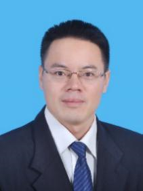
Xuetao Gan
Northwestern Polytechnical University, Xi'an, China
Xuetao Gan is a professor of Applied Physics in Northwestern Polytechnical University (Xi’an, China). He received the B.S. and Ph.D. degrees from Northwestern Polytechnical University in 2007 and 2013, respectively. From 2010 to 2012, he was a visiting scholar at Columbia University (New York, USA). His research interests include nanophotonics of photonic crystals, spectroscopy and optoelectronic devices of low-dimensional materials. He has published more than 30 papers in journals of Nature Photonics, Light: Science & Applications, Optica, Nano Letters, ACS Photonics, Laser Photonics Reviews, Advanced Optical Materials, etc.
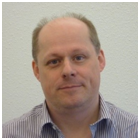
Roger Groves
Delft University of Technology, The Netherlands
Roger Groves is Associate Professor in Aerospace Non-Destructive Testing, Structural Health Monitoring (NDT/SHM) and Heritage Diagnostics at Delft University of Technology, The Netherlands. In his research, he develops optical and ultrasonic instrumentation for the inspection and monitoring of materials and structures for aerospace and heritage applications. He has a Ph.D. in Optical Instrumentation (2002) from Cranfield University UK and was a researcher at the Institute for Applied Optics at the University of Stuttgart, Germany before joining the Faculty of Aerospace Engineering, TU Delft as a faculty member in 2008. He has more than 250 journal and conference publications in optical metrology, fibre optic sensing and ultrasonic testing. He is a Fellow of SPIE, a member of OSA and from 2019 to 2023 he was the Chair of the Institute of Physics Optical Group, UK.

Sen Han
University of Shanghai for Science and Technology & Suzhou H&L Instruments LLC, China
Sen Han is the Professor of University of Shanghai for Science and Technology in China, the Adjunct Professor of University of Arizona in the United States and a SPIE Fellow. He is a co-founder for H&L Instruments. Dr. Han obtained his BE and ME from Changchun Institute of Optics and Mechanics in China and Ph.D. from University of Stuttgart in Germany. He worked at WYKO / VEECO as a Principle Scientist and won R&D 100 awards twice in the United States.

Chao He
University of Oxford, UK
Chao He is a Lecturer, Principal Investigator, and doctoral supervisor at the University of Oxford. He runs the Vectorial Optics and Photonics Group, which focuses on optical techniques for vectorial beam manipulation, including structured light, structured matter, adaptive optics, and polarization sensing. He completed his DPhil degree in the Department of Engineering Science at the University of Oxford from 2018-2020 (within two years) and was later elected as a Junior Research Fellow in Engineering at St John’s College (1st place among all candidates). He is in the Governing Body of St John’s College. He has published over 60 scientific papers, including first- and corresponding-authored papers in Light: Science & Applications, Nature Communications, Optica, Advanced Photonics, elight, etc.
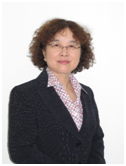
Jane Jiang
University of Huddersfield, UK
Jane Jiang holds a UK Royal Academy of Engineering/Renishaw Chair in Precision Metrology and is the Director of a UK National Hub for Future Metrology. She obtained her Ph.D. in measurement science in 1995, a Professorial Chair in 2003, a DSc for precision engineering in 2007. She received a Damehood in the 2017 Queen’s Birthday Honours for services to manufacturing and engineering Jane’s research involves advanced metrology with two major aspects: i) mathematical models and algorithms for surface texture analysis, filtration and parametric characterisation and ii) optical measurement technologies for embedded sensors/instruments applying to autonomous manufacturing.
Jane is a Fellow of the Royal Academy of Engineering (FREng), a Fellow of the International Academy of Production Research (FCIRP), and the Institute of Engineering Technology (FIET). She has published more than 400 journal papers; was awarded a Royal Society Wolfson Research Merit Award in 2006 and the Sir Harold Hartley Medal and IET Innovation Awards in 2014.

Norbert Kerwien
ZEISS, Germany
Norbert Kerwien is Director of the Design and Concepts Group at Corporate Research and Technology of ZEISS. After his Ph.D. on polarization effects in microscopic image formation at the Institute of Applied Optics, University of Stuttgart, he joined the lithography division of ZEISS in 2006 as optic designer. Since 2010 he works at Corporate Research and Technology. Among his primary interests are physical optical image formation, computational imaging and optical design.
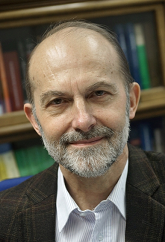
Richard Kowarschik
Friedrich Schiller University Jena, Germany
Richard Kowarschik received his diploma degree and his Dr. rer. nat. in Physics and Dr. habil. degrees from the Friedrich Schiller University, Jena, Germany, in 1973, 1977, and 1991, respectively. He accepted the Chair of Experimental Physics/Coherent Optics in 1992 and was the director of the Institute of Applied Optics at the Friedrich Schiller University between 1990 and 2016. His primary research interests are the physics of the interaction of optical wave fields with media and boundary surfaces and cover optical measuring techniques, optical information storage and processing, and diffractive optical elements. His work regarding optical measuring techniques has, following a long tradition in Jena, a strongly application-oriented character. It includes optical methods for the measurement of 3D surface profiles and deformations (structured light, digital holography, holographic interferometry), wave front sensing and adaptive optics, and microscopy with interferometric techniques. His research in optical information storage and processing includes volume holography, real-time storage, materials (photorefractive crystals, photo polymers), and light-induced processes (wave mixing, spatial solitons) within these materials.

Bernard C. Kress
Google Inc. USA
Bernard Kress has made over the past two decades significant scientific contributions as an engineer, researcher, associate professor, instructor, and author. He has been instrumental in developing numerous optical sub-systems for consumer electronics and industrial products, generating IP, teaching and transferring technological solutions to industry. Application sectors include laser materials processing, optical anti-counterfeiting, biotech sensors, optical telecom devices, optical data storage, optical computing, optical motion sensors, digital image projection, displays, depth map sensors, and more recently head-up and head mounted displays (smart glasses, AR, VR and MR). His is specifically involved in the field of micro-optics, wafer scale optics, holography and nanophotonics.Bernard has published numerous books and book chapters on micro-optics and has more than 30 patents granted worldwide. He is a short course instructor for the SPIE and was involved in numerous SPIE conferences as technical committee member and conference co-chair.He is an SPIE fellow since 2013 as has been recently elected to the board of Directors of SPIE. Bernard has joined Google [X] Labs. in 2010 as the Principal Optical Architect on the Google Glass project, and is since 2015 the Partner Optical Architect at Microsoft Corp, on the HoloLens MR project.
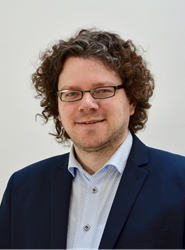
Michael Kues
Leibniz University Hannover, Germany
Michael Kues is University Professor at the Institute of Photonics at the Leibniz University Hannover, Germany, heading the research group “Photonic Quantum Technologies”. He received his Diploma and Ph.D. in Physics in 2009 and 2013, from the University of Münster, Germany. From 2014 he led as a post-doc the integrated quantum optics research lab at the National Scientific Research Institute – Energy, Materials, and Telecommunications (INRS-EMT) in Montréal, Canada. In 2018 he joined for one year the photonic chip fabrication lab at the University of Glasgow, UK, and became Assistant Professor at Aarhus University, Denmark. He received among others a Marie Skłodowska–Curie Individual fellowship, and was awarded a BMBF-Junior-Research-Group and ERC Starting Grant from the European Research Council. He is a board member of the Cluster of Excellence PhoenixD and is in the scientific directorate at the Laser Zentrum Hannover.
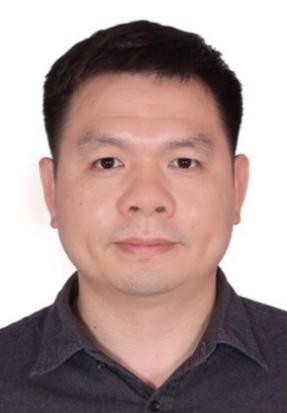
Huihui Lu
Jinan University, China
Huihui Lu is currently a Professor and Director of the Department of Optoelectronic Engineering, as well as Director of the Electronic Institute at Jinan University, China. He earned his Ph.D. degree from the National Centre for Scientific Research (CNRS, France) in 2012. Following this, he joined Jinan University as an Assistant Professor in 2013, was promoted to Associate Professor in 2015, and has been serving as a Professor since 2019. During 2016–2017, he was also a Visiting Professor at the Institute of Femto-ST, CNRS France. His research focuses on integrated optics, nanophotonics and related micro and nanofabrication technologies, and lithium niobate photonic devices, with applications in beam steering, nonlinear optics, optical modulation, sensing, and photodetection. Prof. Lu has published more than 100 papers in prestigious journals such as Light: Science & Applications, Nano Letters, Laser & Photonics Reviews, etc. He has been an active Technical Program Committee member for several international and domestic conferences and has delivered over 30 invited talks.
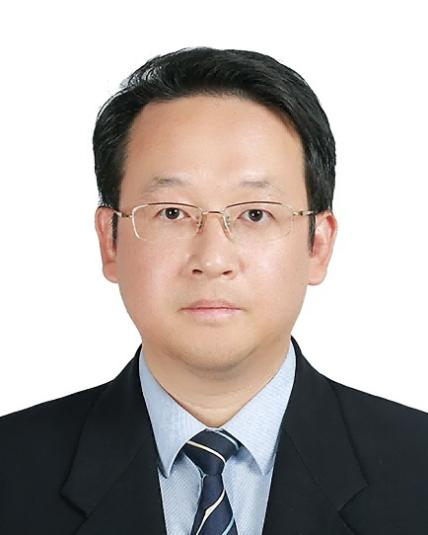
Jun Ma
Nanjing University of Science and Technology, Nanjing, China
Jun Ma received a B.E. degree in measurement and control technology and instruments from Nanjing University of Science and Technology (NJUST), China, in 2005. Then, he continued his studies at NJUST and received the Ph.D. degree in 2011, with the thesis of optical intererometric metrology for ashperics. In 2007, he worked as a research assistant in the Department of Electronic Engineering at the City University of Hong Kong. From 2009 to 2011, he was working at the Institute of Applied Optics, University of Stuttgart, Germany. After that, he has been employed in the School of Electronic and Optical Engineering at NJUST and now is a professor. He is dedicated to research on optical metrology, especially in optical interferometry, resolution enhancement and optical design.
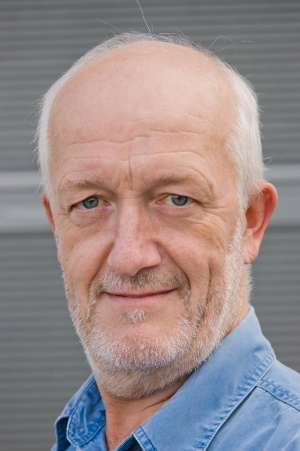
Eberhard Manske
Institute of Process Measurement and Sensor Technology, Technische Universität Ilmenau, Germany
Eberhard Manske received his diploma in electrical engineering from the Technical University of Ilmenau in 1982. He obtained his doctorate in 1986 and habilitated in 2006 in the field of precision metrology. Since 2008, he has held a professorship for "Production and Precision Metrology" at the Technical University of Ilmenau.
From 2008 to 2013, he was spokesperson for the Collaborative Research Centre "Nanopositioning and Nanomeasuring Machines (SFB 622)" and from 2017-2020 he headed the Research Training Group "Advanced and laser-based 3D nanofabrication in extended macroscopic working areas (NanoFab)" funded by the German Research Foundation.
His research activities focus on the development of nanopositioning and nanomeasuring machines, particularly in the fields of high-precision laser interferometry, laser stabilisation, frequency comb technology, optical and tactile nanosensors and scanning probe methods.
Together with Dr Denis Dontsov (SIOS Meßtechnik GmbH), he established World Interferometry Day in 1921, which is celebrated annually at the beginning of April to mark the first successful interferometer experiment by Albert Michelson in 1881.

Dinesh N Naik
Indian Institute of Space Science and Technology, India
Dinesh N Naik received the MSc in Physics from the University of Hyderabad, India in 2007. From 2007 to 2011, under the Monbukagakusho Scholarship, also known as the MEXT Scholarship, a Japanese government scholarship program that supports international students in pursuing studies at Japanese universities. he carried out his doctoral research in the field of Coherence Holography under the guidance of Prof. Mitsuo Takeda at the University of Electro-Communications, Tokyo. He received the University President Award of the University of Electro-Communications, Tokyo, Japan for the best thesis and excellent research in Ph. D in 2011.From 2012 to 2014, he was working as post-doctoral fellow under Alexander von Humboldt Fellowship at Institute of Applied Optics, University of Stuttgart, Germany during which he carried out research in spectrally resolved incoherent holography. On returning to his home country, from 2015 to 2017 he worked as a faculty at School of Physics, University of Hyderabad, India under the INSPIRE Faculty Award of Department of Science and Technology, Government of India. During this period, he developed schemes for generation of optical phase singularities using superposition of two fundamental Gaussian beams. In 2017, he moved to Department of Physics, Indian Institute of Space Science and Technology (IIST), at the Southernmost part of India. At the Applied and Adaptive Optics Laboratory of IIST, he is currently leading the research in Applied Optics, Optical Metrology and Sensing. He is a life-time member of SPIE and Optical Society of India.
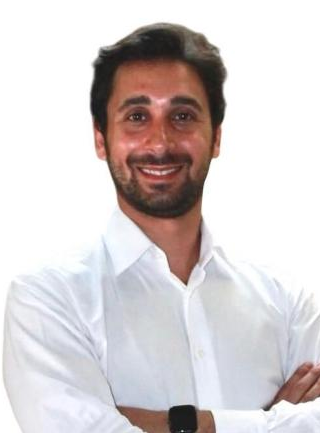
Stefano L. Oscurato
Department of Physics "Ettore Pancini", University of Naples Federico II, Italy
Stefano L. Oscurato is Associate Professor of Physics at the University of Naples Federico II, Italy. He received his Ph.D. in Physics in 2018 with a thesis focused on laser-based fabrication and characterization of complex optical systems. Following his doctorate, he held research positions in both Italy and the United States, focusing on the development of advanced optical techniques for the characterization and control of nanostructured and polymeric materials. In 2024, Prof. Oscurato was awarded the prestigious European Research Council (ERC) Starting Grant for his project on holographic lithography aiming to develop new all-optical strategies for the fabrication and in-situ reconfiguration of flat diffractive elements and multifunctional photonic surfaces. He currently leads the Holographic Lithography research group at Federico II in Naples (Italya), where his team investigates advanced holo-photolithographic approaches to enable next-generation manufacturing of reconfigurable optical devices. His research lies at the intersection of optics, materials science, and nano/microfabrication.
Prof. Oscurato has authored over 70 peer-reviewed publications in international journals and serves as a reviewer for several top-tier journals in optics and materials science and participates actively in European and international research initiatives. His contributions aim to bridge fundamental optical physics with applications in nano/microstructuring, advanced manufacturing, and functional interfaces.

Andreas Ostendorf
Ruhr University Bochum, Germany
Andreas Ostendorf is currently a professor in applied laser technologies and optics at Ruhr University Bochum, Germany (RUB). Besides, he is a member of the rectorate of RUB where he serves as Vice‐Rector for Research, Transfer and Talent Development. He studied Electrical Engineering at Leibniz University Hannover, Germany. In 2000 he received his Ph.D. in Mechanical Engineering from Leibniz University Hannover. Also in 2000 he was appointed Executive Director at Laser Zentrum Hannover (LZH), a non‐university and worldwide renowned research center in laser optics, laser sources and laser applications. After a very successful development of LZH he was appointed professor at RUB in 2008. In 2003 he was elected member of the German Scientific Laser Society (WLT), which he chaired as president from 2013‐2016. Since 2004 he is also member of the Board of Directors at Laser Institute of America (LIA), where he was elected president in 2008. He is Fellow of LIA, SPIE and the International Academy of Photonics and Laser Enegineering IAPLE.
During his scientific career he has published more than 300 peer reviewed papers. His research is focused on laser materials processing using short and ultrashort pulsed lasers as well as in laser metrology, especially in spectroscopic applications and the use of microresonators in precision measurement. He has been coordinating a Priority Programme at the German Research Foundation (DFG) on the generation of sub 100 nm structures using ultrashort laser pulses. From 2012 – 2017 he was member of the DFG Grants Committee on Research Training Groups.

Nikolay V. Petrov
ITMO University, Russia
Nikolay V. Petrov received a master's degree from Saint-Petersburg State University in 2007 and got a Ph.D. degree in optics from the ITMO University, St. Petersburg, Russia. Since 2011, he has been a Senior Researcher and Associate Professor with the Department of Photonics and Optical Information Technology, ITMO University. Since 2016 he established a digital and display holography laboratory, and since 2017 he is a leading researcher. In 2019 he gained a doctorate (Dr. habil.) degree in optics. His research interests are currently focused on holography, femtosecond optics, and terahertz imaging. He has co-authored around 100 publications in the Scopus database. He is a member of OSA, SPIE and the Optical Society named after D.S. Rozhdestvensky. Dr. Petrov was the recipient of the Russian Federation Government Prize in Education in 2010 and is a winner of several prizes: St. Petersburg Youth Award in Education in 2012, Yu. I. Ostrovsky Prizes for the best scientific work in the field of optical holography and interferometry in 2012, and 2015, St. Petersburg Government Prize in the field of scientific and pedagogical activity in 2015 and Yu.N. Denisyuk medal in 2017. OSA Senior Member from 2019.
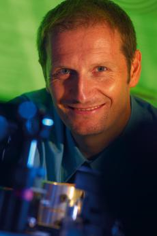
Pascal Picart
Le Mans Université, France
Pascal Picart is a Professor at Le Mans Université, France. He graduated from the École Supérieure d’Optique in 1992 and received his Ph.D. in physics from the University of Paris XI, Orsay, France, in 1995. He joined Le Mans University in 1996. He is the author of 98 journal papers, 18 invited talks, 98 articles in international conferences, 6 book chapters, coordinated 3 books and co-founded one start-up. His research topics are connected with coherent imaging based on digital holography and its various applications to acoustics, mechanics and fluid mechanics.
Pascal Picart is member of the Optical Society of America (OSA), SPIE, Société Française d’Optique (SFO), European Optical society (EOS), Club EEA, Institute of Electrical and Electronics Engineers (IEEE).
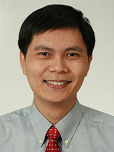
Kemao Qian
Nanyang Technological University, Singapore
Qian Kemao is an Associate Professor in the School of Computer Science and Engineering at Nanyang Technological University. He graduated from University of Science and Technology of China, where he got his BE, ME and PhD degrees. His research interests include optical metrology, image processing, parallel computing, and computer vision.
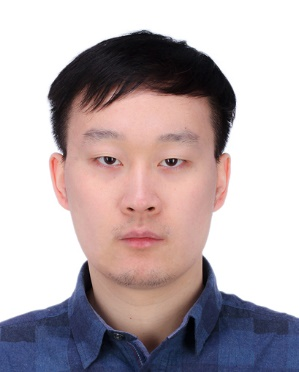
Hui Qiao
Tsinghua University, China
Hui Qiao is currently an Assistant Professor in the Department of Automation at Tsinghua University. He received the BE degree in automation from Tsinghua University, China, in 2013, and the Ph.D. degree in control science and engineering from Tsinghua University, China, in 2019. From 2019 to 2021, he was a postdoctoral researcher in the Department of Automation at Tsinghua University. Dr. Qiao was selected into National Postdoctoral Program for Innovative Talents in 2019. His research interests include computational imaging, biomedical engineering, and artificial intelligence. He has published papers in the journals such as Cell, Light: Science & Applications, Patterns, IEEE TPAMI and so on.

Yuwen Qin
Guangdong University of Technology, China
Yuwen Qin is Specially-appointed Professor of Guangdong University of Technology and former Executive Director of Information Sciences Department of NSFC. He received his BS in physics from Henan Normal University (1987), MS in Optics from Xi'an Institute of Optics and Precision Mechanics (1992) and Ph.D. in Optical instrument from Tianjin University (1996). He worked as postdoctoral researcher in Beijing Jiaotong University from 1996 to 1998, and as postdoctoral researcher and visiting scholar in Virginia Tech from 2000 to 2001. He has set-up a research group with his colleagues to explore optical communication and optical fiber sensors in Guangdong University of Technology. He has authored or coauthored more than 60 technical papers. He also served as associate editors-in-chief for SCIENTIA SINICA Informationis and SCIENCE CHINA Information Sciences, Editorial Board Members of Light: Science & Applications, Referee for OE, Chairman and Program Chairman for several international conference.

Haisheng Rong
Intel Labs, USA
Haisheng Rong is a Senior Principal Scientist with Intel Labs, where he leads pioneering research and development in silicon photonics technology for next-generation high-speed and energy-efficient Optical Compute Interconnect (OCI) applications. His career spans various domains within optical and laser technologies, including optical information processing, laser spectroscopy, laser interferometer gravitational-wave observatory (LIGO), and fiber optical communications. His outstanding contributions to silicon photonics have earned him numerous accolades, including the Scientific American 50 Award, Intel Achievement Award, Intel Labs Gordy Award, Paul F. Forman Team Engineering Excellence Award, and the Photonics 100 Award. He holds over 60 U.S. patents and has authored more than 120 scientific publications. He received his B.S. and M.S. degrees from Nankai University in China and his Ph.D. from Heidelberg University in Germany. Dr. Rong is a Fellow of IEEE, Optica, and SPIE.
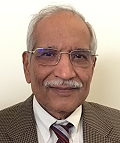
Rajpal Singh Sirohi
Indian Institute of Technology, India
Rajpal Singh Sirohi obtained Post M.Sc. Diploma in Applied Optics and Ph. D. in Physics from Indian Institute of Technology, New Delhi in 1965 and 1970 respectively. He served Indian Institute of Technology Madras as Assistant Professor and Professor during 1971-1979. He joined Indian Institute of Technology Delhi as Director in 2000 and superannuated in April 2005. During 2005 – 2011, he was Vice-Chancellor of Barkatullah University Bhopal, Shobhit University Meerut and Amity University Jaipur. He was also the Visitor to the Teerthanker Mahaveer University, Moradabad (June 2012- June 2013).
He is currently serving in the Physics Department, Alabama A &M University, Huntsville, Alabama USA. Prior to this (2013 - 2016), he was the Chair Professor, Physics Department, Tezpur University, Tezpur, Assam, India. He was Distinguished Scholar in the Department of Physics and Optical Engineering, Rose Hulman Institute of Technology, Terre Haute, Indian USA during 2011 - 2013.
Prof. Sirohi worked in Germany as a Humboldt Fellow at PTB, Braunschweig, and as a Humboldt Awardee at Oldenburg University. He was a Senior Research Associate at Case Western Reserve University, Cleveland, Ohio, and Associate Professor, and Distinguished Scholar at Rose Hulman Institute of Technology, Terre Haute, Indiana. He was ICTP (International Center for Theoretical Physics, Trieste Italy) Consultant to Institute for Advanced Studies, University of Malaya, Malaysia and ICTP Visiting Scientist to the University of Namibia. He was Visiting Professor at the National University of Singapore, and EPFL, Lausanne, Switzerland.
Prof. Sirohi is Fellow of several important academies/ societies in India and abroad including the Indian National Academy of Engineering; National Academy of Sciences, Optical Society of America; Optical Society of India; SPIE (The International Society for Optical Engineering), Instrument Society of India and honorary fellow of ISTE and Metrology Society of India. Recently, the Optical Society of India conferred on him the distinction of Distinguished Fellow. He is member of several other scientific societies and founding member of India Laser Association.
Prof. Sirohi has received 22 national and international awards. A few of them are:
Humboldt Research Award (1995) by the Alexander von Humboldt Foundation, Germany; Galileo Galilei Award of International Commission for Optics (1995); Padma Shri, a national Civilian Award (2004) by Govt. of India; Sir CV Raman Birth Centenary Award (2005) by Indian Science Congress Association, Kolkata; Gabor Award (2009) by SPIE (The International Society for Optical Engineering) USA; Vikram Award 2014 by SPIE, USA. Maria J. Yzuel Educator Award (2022) by SPIE, USA. According to Stanford University ranking report, he is listed with in 2% of the global scientists in Optoelectronics and Photonics.
Prof. Sirohi was the President of the Optical Society of India during 1994-1996. He was also the President of Instrument Society of India for three terms (2003-06, 2007-09, 2010-12). He was on the International Advisory Board of the Journal of Modern Optics, UK and on the editorial Boards of the Journal of Optics (India), Optik, Indian Journal of Pure and Applied Physics. He was Guest Editor to the Journals “Optics and Lasers in Engineering” and “Optical Engineering”. He was Associate Editor of the International Journal “Optical Engineering”, USA during (1999-Aug.2013), and its Senior Editor (August 2013-November 2021). He is the Series Editor of the Series on ‘Advances in Optics, Photonics and Optoelectronics’ published by Institute of Physics (IoP) Publishing, UK.
Prof. Sirohi has 500 papers to his credit with 254 published in national and international journals, 78 papers in Proceedings of the conferences and 168 presented in conferences. He has authored/co-authored/edited thirteen books including five milestones for SPIE. He was Principal Coordinator for 26 projects sponsored by Government Funding Agencies and Industries, has supervised 25 Ph.D. theses, 7 M.S. theses and numerous B.Tech., M.Sc. and M.Tech. theses.
Prof. Sirohi’s research areas are Optical Metrology, Optical Instrumentation, Laser Instrumentation, Holography and Speckle Phenomenon.
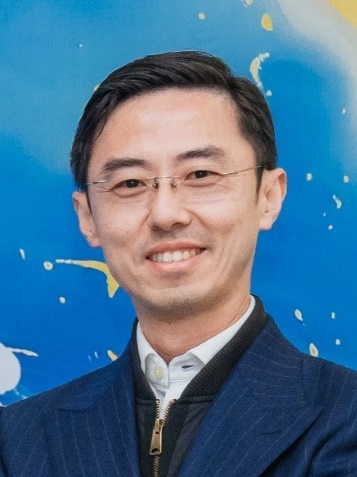
Rong Su
Shanghai Institute of Optics and Fine Mechanics, Chinese Academy of Sciences, China
Rong Su is a professor at Shanghai Institute of Optics and Fine Mechanics, Chinese Academy of Sciences. He received BSc from Sun Yat-sen University, and MSc (photonics) and PhD (Industrial optical metrology) from KTH Royal Institute of Technology in Sweden. Between 2015 and 2021 he worked as a researcher at the National Physical Laboratory and University of Nottingham in the UK. He has had a long-term commitment to ultra-precision optical surface topography measuring instruments and technology, focusing on instrumentation, wave optics theories, algorithm, calibration, industrial applications and international standards. He has published 50+ peer-reviewed journal papers and 2 book chapters, and had ten-year research and management experience in EU and UK projects. His research outcomes have led to top-level optical instrument development. In 2021, he was awarded a fellowship from the Chinese Academy of Sciences and since then has secured significant amount of grant for research. He is the co-chair of the programme committee of Light Conference on Advanced Optical Manufacturing, a session chair of SPIE Optical Metrology, a member of seven professional organizations, and a registered expert of ISO TC213/WG16.
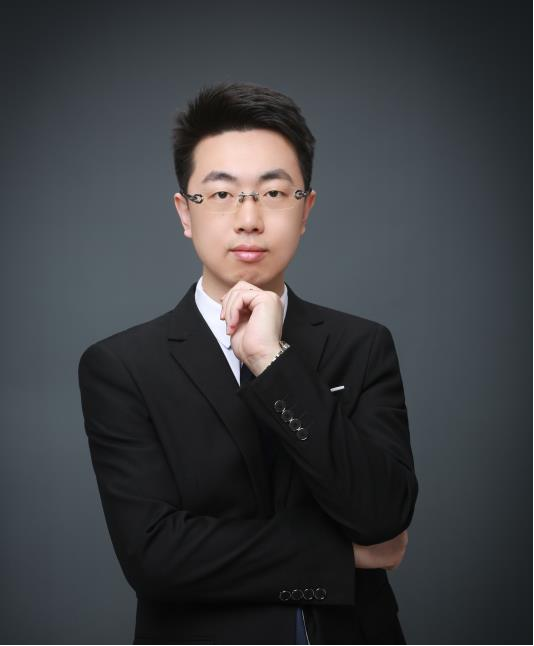
Dapeng Tian
Changchun Institute of Optics, Fine Mechanics and Physics, Chinese Academy of Sciences, Changchun, China
Dapeng Tian received the B.E. degree in aircraft design from Beijing Institute of Technoloty, Beijing, China, in 2007. He was then directly recommended to study at Beihang University, Beijing, where he received the Ph.D. degree in control science in 2012. From 2009 to 2012, he was a co-researcher with the Advanced Research Center, Keio University, Yokohama, Japan. Since 2012, he has been with the Key Laboratory of Airborne Optical Imaging and Measurement, Changchun Institute of Optics, Fine Mechanics and Physics, Chinese Academy of Sciences, Changchun, China, where he is currently a Full Professor (Research Fellow). Prof. Tian is an IEEE Senior Member. He is also the chair of Changchun Branch of Youth Promotion Association of Chinese Academy of Sciences. He is the author and co-author of more than 70 papers. He holds eighteen Chinese patents, and also won the awards of First Prize of National Science and Technology Progress of China and other high-level science and technology awards. His current research interests include motion control, high accuracy instruments and its manufactory.
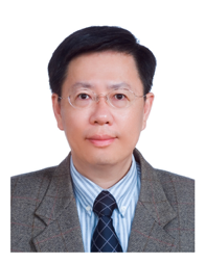
Din Ping Tsai
City University of Hong Kong, China
Din-Ping Tsai is currently Chair Professor of the Department of Electrical Engineering, City University of Hong Kong. He is an elected Fellow of AAAS, APS, COS, EMA, HKAE, IEEE, JSAP, NAI, OSA, SPIE, PST, and AAIA, respectively. He is also an elected Member of the International Academy of Engineering (IAE), and Academician of the Asia-Pacific Academy of Materials (APAM), respectively. He is the author and co-author of 405 SCI papers, 70 book chapters and conference papers, and 39 technical reports and articles. He was granted 69 patents for 45 innovations. He was invited as an invited speaker for international conferences or symposiums more than 340 times (28 Plenary Talks, 66 Keynote Talks). He received more than 40 prestigious recognitions and awards, including “Mozi Award” from the International Society of Optical Engineering (SPIE) in 2018; “Global Highly Cited Researchers,” by Web of Science Group (Clarivate Analytics) in 2020 and 2019, respectively; China’s Top 10 Optical Breakthroughs in 2020 and 2018, respectively; 2024 Frontiers of Science Award; etc. He currently serves as a member of the editorial board of 12 prestigious Journals, Associate Editor of “Science Advances,” and Editor of “Light: Advanced Manufacturing” and "Photonics Insights," respectively.
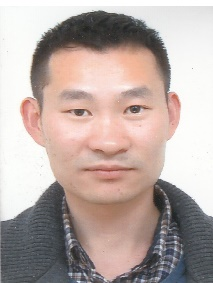
Gai-Ge Wang
Ocean University of China, China
Gai-Ge Wang is a professor at Ocean University of China, China. The latest Google h-index and i10-index are 64 and 142, respectively. He was selected as one of “2021 and 2022 Highly Cited Researchers” by Clarivate. He was selected as one of “2020-2023 Highly Cited Chinese Researchers” in computer science and technology by Elsevier. He was selected as one of “MDPI 2021 Most Influential Author Award” in Computer Science and Mathematics by MDPI. He was selected as World’s Top 2% Scientists 2020. One of his papers was selected as “100 Most Influential International Academic Papers in China”,
one of his papers was selected as 2023 Outstanding Paper Award for the IEEE Transactions on Industrial Informatics, one of his papers ranks 1 in the selection of the latest high-impact publications in computer science by Chinese researchers from Springer Nature in 2019. He served as Editors-in-Chief of IJAISC, Early Career Advisory Board Member of IEEE/CAA Journal of Automatica Sinica (SCI), Editorial Advisory Board Member of Communications in Computational and Applied Mathematics (CCAM), Associate Editor of IJCISIM, an Editorial Board Member of JCDE, Mathematics, IJBIC, and Journal of AIS. His research interests are swarm intelligence and Intelligent manufacturing.
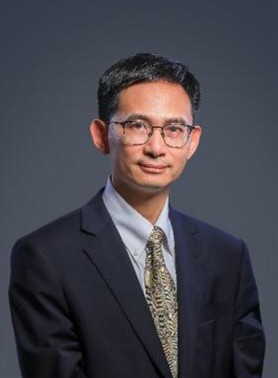
Jun Wang
Suzhou Everbright Photonics Co., Ltd.,Suzhou,China
Jun Wang, Chief Technology Officer of Suzhou Everbright Photonics Co., Ltd. (Suzhou, P.R. China) and Distinguished Professor at the College of Electronics and Information Engineering, Sichuan University (Chengdu, P.R. China).
Dr. Jun Wang serves as the Chief Technology Officer of Suzhou Everbright Photonics Co., Ltd. and is a Distinguished Professor at the College of Electronics and Information Engineering, Sichuan University. He received his B.Sc. and M.Sc. in Materials Science and Engineering from Tianjin University in 1985 and from the Institute of Metal Research (IMR), Chinese Academy of Sciences in 1988, respectively. He later earned a second M.Sc. in Applied Physics from Queen’s University in Kingston, Canada, in 1992, and a Ph.D. in Engineering Physics from McMaster University, Canada, in 1997.
Since 1992, Dr. Wang has been actively engaged in research and industrial work on compound semiconductor materials and diode laser devices at various institutions and companies, including the National Research Council Canada (NRC Canada), Spectra-Physics, Lasertel, nLight, and Everbright Photonics. In 2018, he additionally assumed a professorship at Sichuan University, and in 2025, he was appointed Director of the Jiangsu Laboratory of Semiconductor Laser and Sensing Technology. His research and industrial efforts focus on the epitaxy of III-V materials, wafer fabrication, and optoelectronic devices. He has led and participated in numerous R&D programs in the field of high-power semiconductor lasers and related photonic devices. With approximately 100 publications to his name, Dr. Wang has reported groundbreaking results in the efficiency, output power, and reliability of semiconductor lasers and photonic devices.
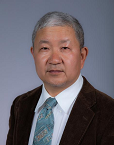
Xinwei Wang
Iowa State University, USA
Xinwei Wang is the Anson Marston Distinguished Professor and Wilkinson Professor in Interdisciplinary Engineering at Iowa State University (http://web.me.iastate.edu/wang). He obtained his Ph.D. from the School of Mechanical Engineering, Purdue University in 2001, M.S. (1996) and B.S. (1994) from the University of Science and Technology of China. Over more than 20 years, he has led his laboratory to conduct extensive research on thermophysical properties of micro/nanoscale materials and interfaces, energy transport physics and control, and laser-assisted material interaction and manufacturing. His lab has developed a number of new techniques for measuring the thermal conductivity/diffusivity and interfacial thermal resistance of micro/nanoscale materials, including the TET, TPET, PLTR, ET-Raman and FET-Raman techniques. His lab reported the first work on distinguishing the optical and acoustic phonon thermal nonequilibrium, and distinguishing the transport of phonons and hot carriers in 2D materials. The thermal reffusivity theory and equivalent interfacial medium theory developed by his lab provide novel ways to correlate phonon scattering and material/interface structures. He received the inaugural Viskanta Fellow Award of Purdue University for his pioneering and independent work in thermal sciences. He is the Fellow of ASME and OPTICA, and Associate Fellow of AIAA. At present, he is the associate/senior editor of five international journals, and on the editorial board of six journals.
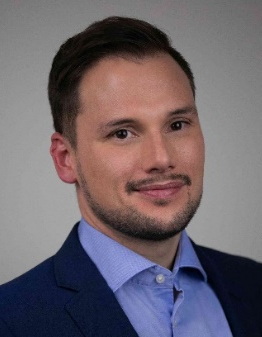
Florian Willomitzer
University of Arizona, USA
Florian Willomitzer is an Associate Professor at the Wyant College of Optical Sciences – University of Arizona. He directs the Computational 3D Imaging and Measurement (3DIM) Lab, where he and his team work on novel techniques to image hidden objects through scattering media or around corners, unconventional methods for precise VR eye-tracking, high-resolution holographic displays, novel techniques for optical free-space communication, and the implementation of high-precision metrology methods in low-cost mobile handheld devices. Moreover, the group develops novel time-of-flight and structured light 3D imaging techniques working at depth resolutions in the 100μm-range.
Prof. Willomitzer graduated in 2017 from the University of Erlangen-Nuremberg, Germany, where he received his Ph.D. degree in Physics with honors (‘summa cum laude’). During his doctoral studies he investigated physical and information theoretical limits of optical 3D-sensing and implemented sensors that operate close to these limits. Prof. Willomitzer joined Northwestern University as Postdoc in Fall 2017, where he became Research Assistant Professor in 2019 and started the 3DIM Lab at Northwestern shortly thereafter. In Fall 2022, he joined the Wyant College of Optical Sciences at the University of Arizona as Associate Professor.
Prof. Willomitzer serves/served as Chair and Host of the Optica Incubator on Imaging Through 100 Scattering Lengths, Chair and Committee Member of several Optica COSI conferences, Optics Chair of the 2022 IEEE ICCP conference, Committee member of Optica FiO, DGaO, ICMVA, and ODF conferences, and as a reviewer for the Nature and Light portfolio (Nature, Nature Photonics, LSA, LAM), Optica (formerly OSA), SPIE, IEEE, and CVPR. He is the recipient of the NSF CRII grant, winner of the Optica 20th Anniversary Challenge, OSA Senior Member, and his Ph.D. thesis was awarded with the Springer Theses Award for Outstanding Ph.D. Research.

Dong Wu
University of Science and Technology of China, China
Dong Wu is a professor of Engineering Science at the University of Science and Technology of China. He obtained Ph.D. degree from Jilin University in 2010 and then became a postdoc at RIKEN in Japan from 2011 to 2014. His thesis was awarded “100 Excellent Doctoral Theses” of China. His research interests are SLM-based high-efficiency femtosecond laser 3D micro-fabrication in various materials towards highly functional 2D-3D devices, which have found applications in nonlinear beam shaping, particles filtering, and cell manipulation. Prof. Wu has published 100 papers in the journals such as Nature Photonics, Nat. Comm., Light: Sci & Appl., PNAS, Laser Photon. Rev., Adv. Mater., ACS Nano and so on.
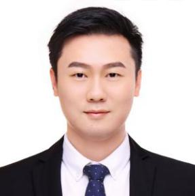
Xi Xiao
NOEIC/CICT, China
Xi Xiao is the CEO of National Information Optoelectronics Innovation Center (NOEIC) in China, the Vice Director of the State Key Laboratory of Optical Communication Technologies and Networks, and the silicon photonics group leader of China Information Communication Technologies Group Corporation (CICT). He was an associate professor of the institute of Semiconductors, Chinese Academy of Sciences till 2013. His present research interests include the 400G-to-Terabps-scale silicon-based photonic devices for telecommunications, datacom and interconnect applications, as well as their enabling fabrication and integration technologies. He has published over 100 papers and over 20 invited talks. His group demonstrated the world’s first 80Gbaud and 90Gbaud silicon MZI modulators and the China’s first 100G/200G silicon photonic coherent transceiver product. He also works as an active TPC member of CLEO, ACP, OECC and POEM, etc.
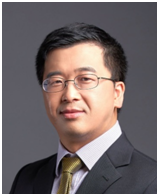
Fucai Zhang
Southern University of Science and Technology, China
Fucai Zhang holds the BSc and MSc degrees in Electronic Engineering from North China Electric Power University and Ph.D. degree from Gunma University, Japan. He worked in the Institute of Applied Optics, University of Stuttgart, from 2004-2007, the University of Sheffield from 2007-2011, and then University College London, from 2011-2017. He moved to Southern University of Science and Technology and joined the Department of Electrical and Electronic Engineering as an Associate Professor in 2017. Current research interests are on method development for high-resolution microscopy at short wavelengths with synchrotron x-rays and electrons, particularly on the development phase retrieval algorithm and new scheme of coherent diffractive imaging to meet the ever-increasing needs in biology and materials sciences.
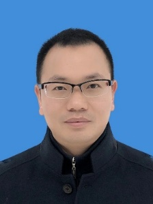
Tao Zhu
Chongqing University, China
Tao Zhu is a professor and vice-dean of College of Optoelectronic Engineering of Chongqing University, China, where he obtained Ph.D. degree in 2008. He then worked as a post-doc in the University of Ottawa, Canada during 2010-2011. His interests are mainly in the fields of laser technology, optical fiber sensing, as well as photoelectric functional devices. He was a winner of the National Science Fund for Distinguished Young Scholars of China. Currently he is an associate editor of IEEE Photonics Journals and a council member of COS & CIOE. He has authored/co-authored over 200 papers and holds over 20 patents. He also co-authored a monograph entitled "Principles and Applications of Fiber Bragg Grating".
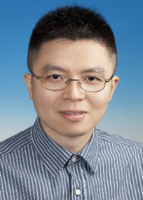
Yiming Zhu
University of Shanghai for Science and Technology, China
Yiming Zhu is a professor in University of Shanghai for Science and Technology and the director of the Terahertz Spectrum and Imaging Technology Cooperative Innovation Center. He obtained Ph.D. degree from the University of Tokyo. He was awarded numerous titles/projects including “Young Yangtze Professor” (MOE) and the “Outstanding Youth Foundation” (NSFC), etc. His research focuses on terahertz technologies and applications, including terahertz devices, terahertz spectroscopy, imaging systems, terahertz bio-applications, etc. He has published more than 100 papers in Light Sci. & Appl., Adv. Mater., Laser Photon. Rev., etc., among those 5 are selected as ESI highly-cited papers. He has more than 60 patents and 7 of them are commercialized.







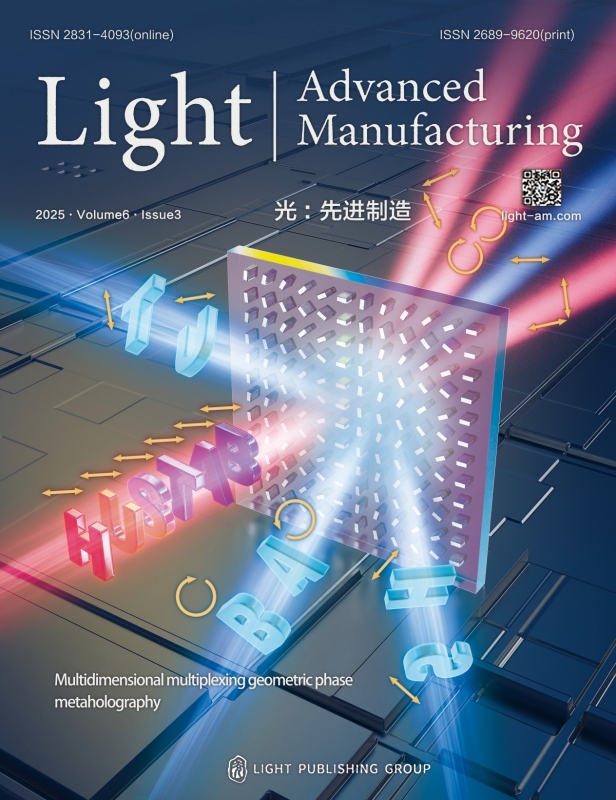

 Email
Email RSS
RSS